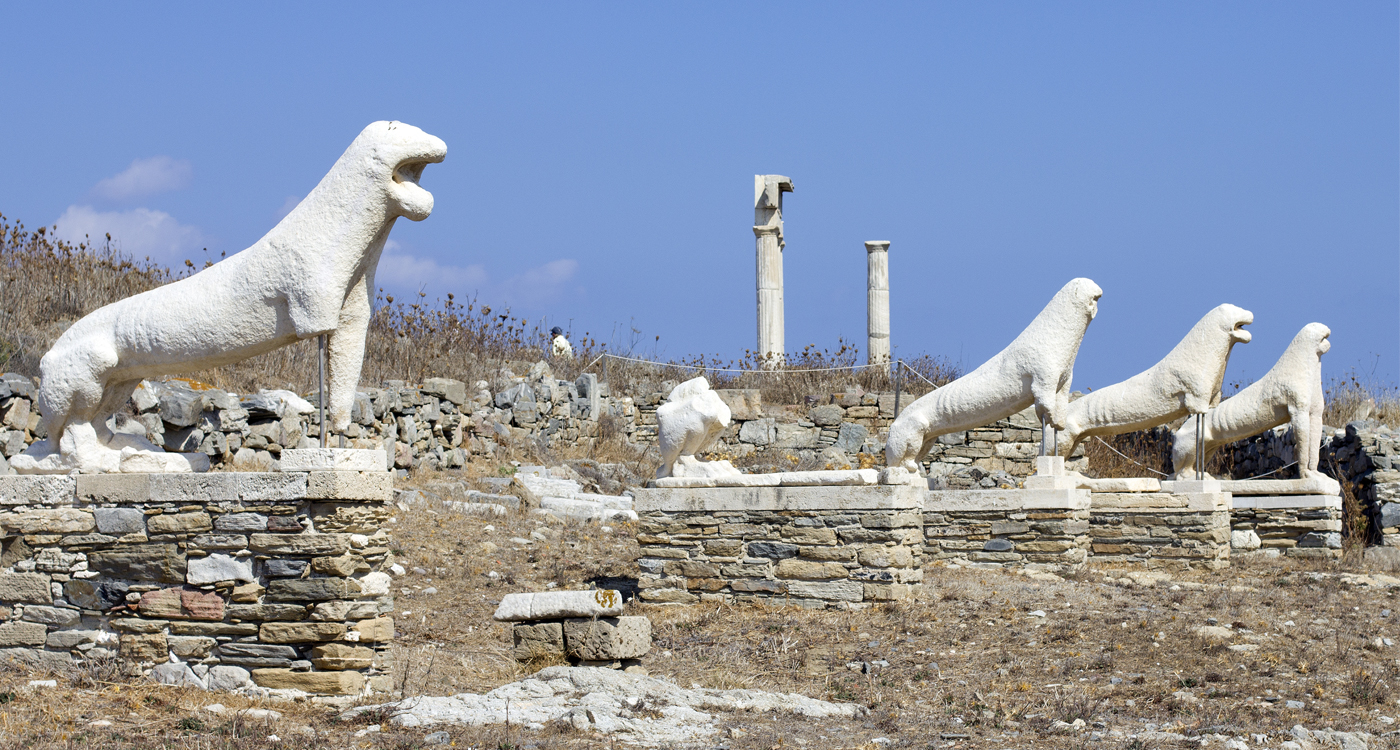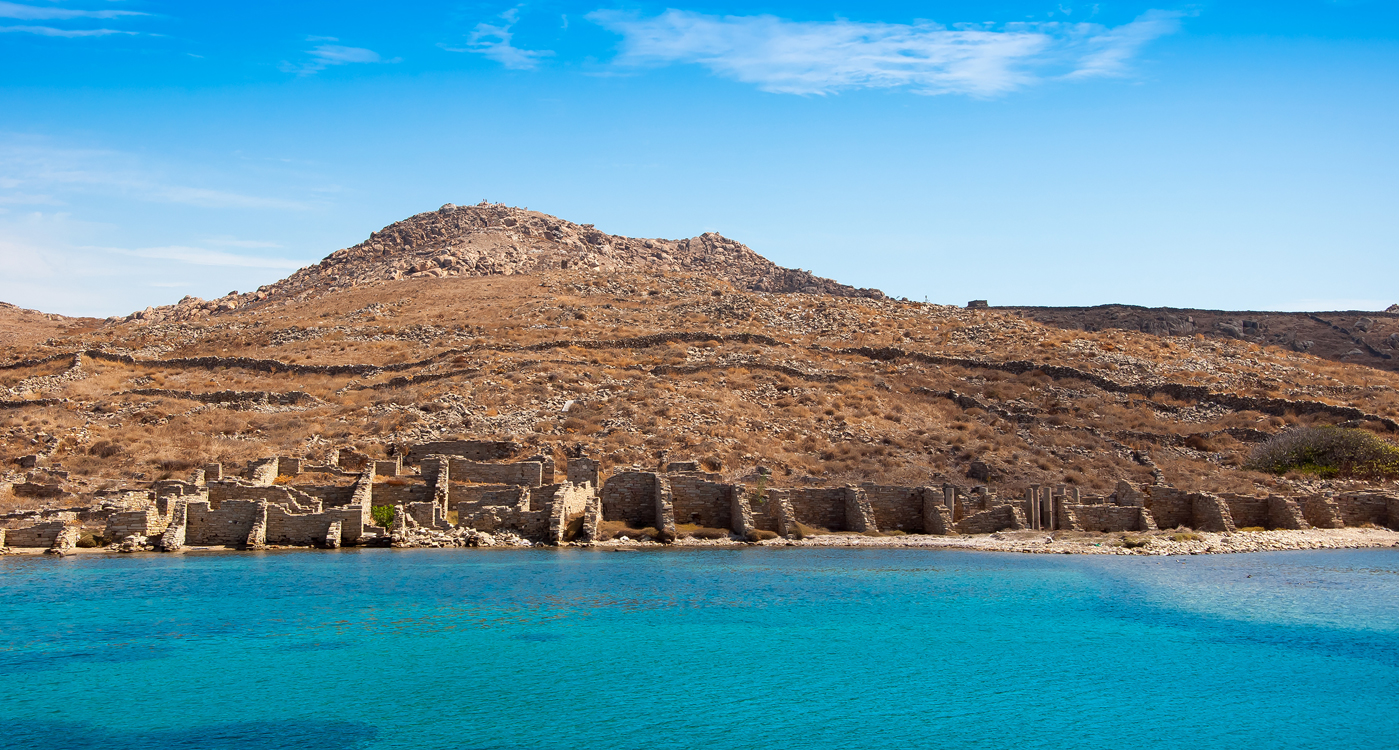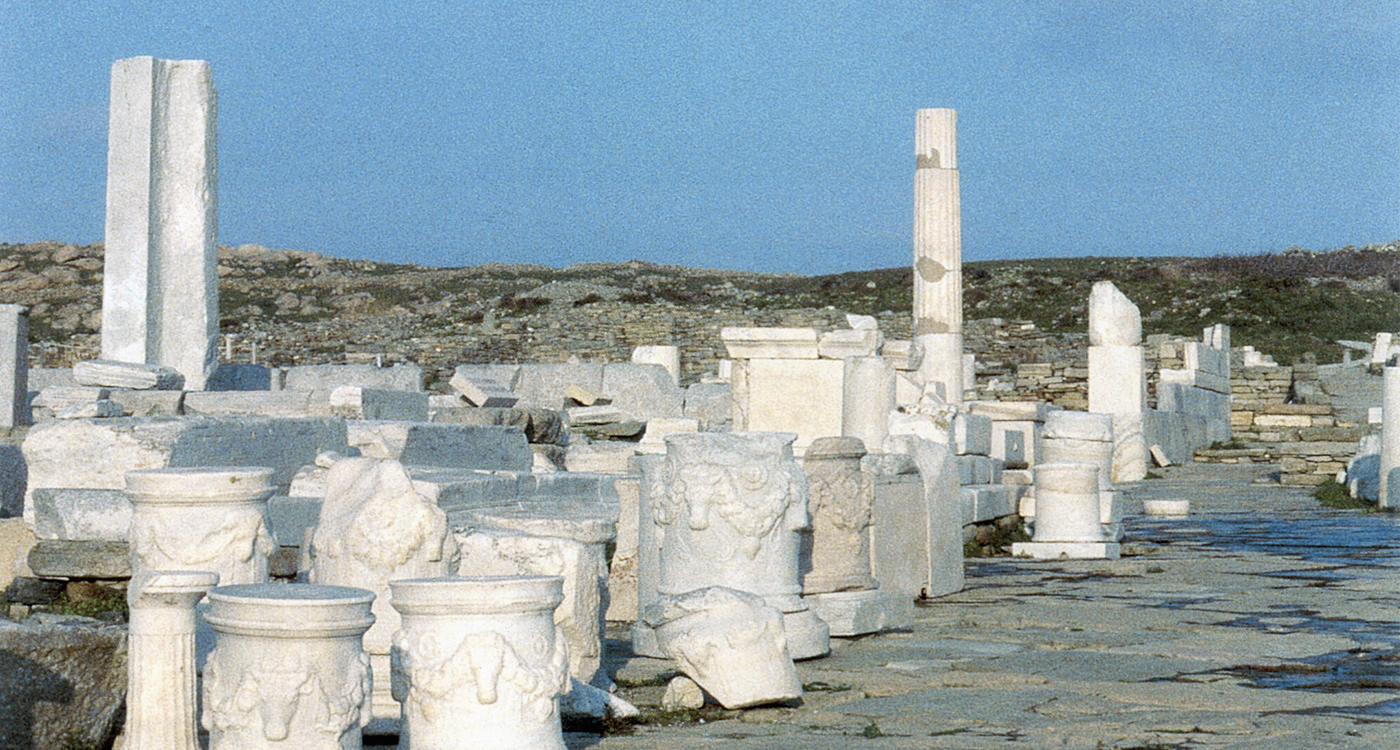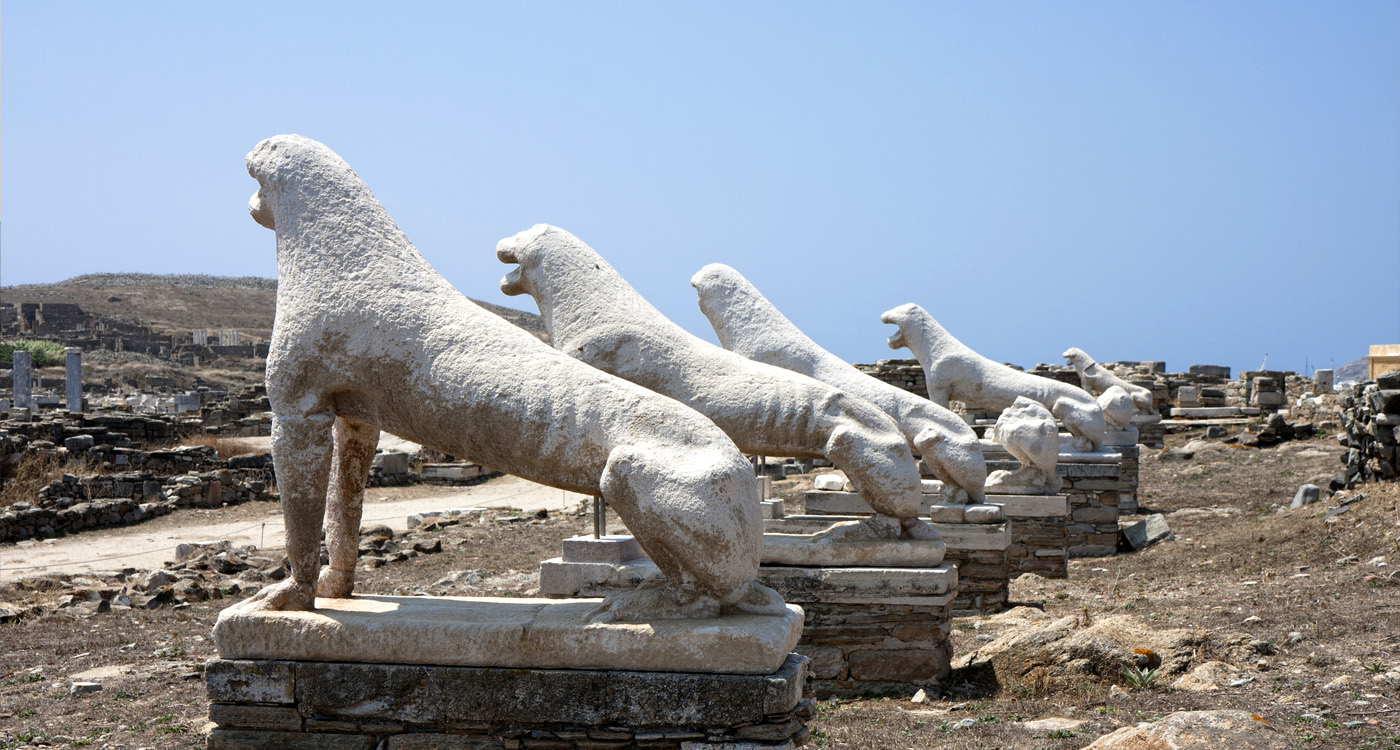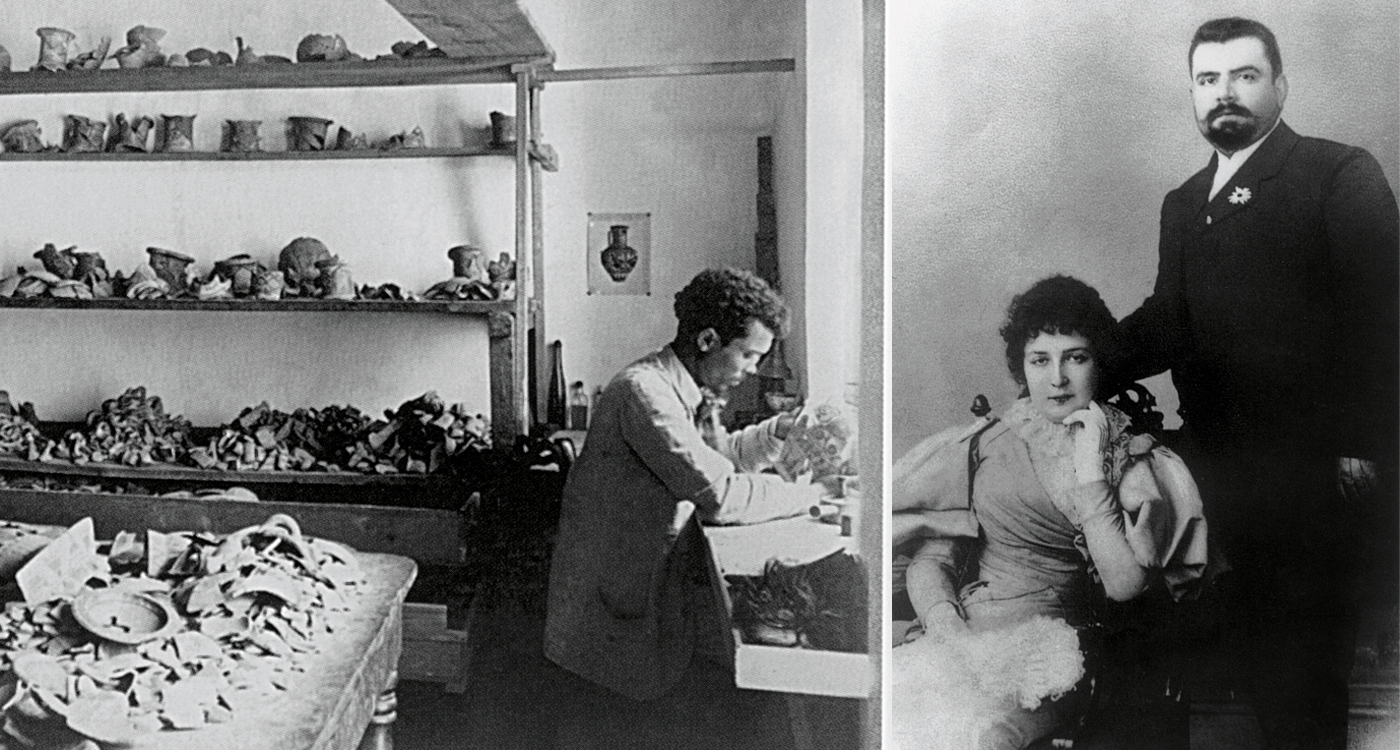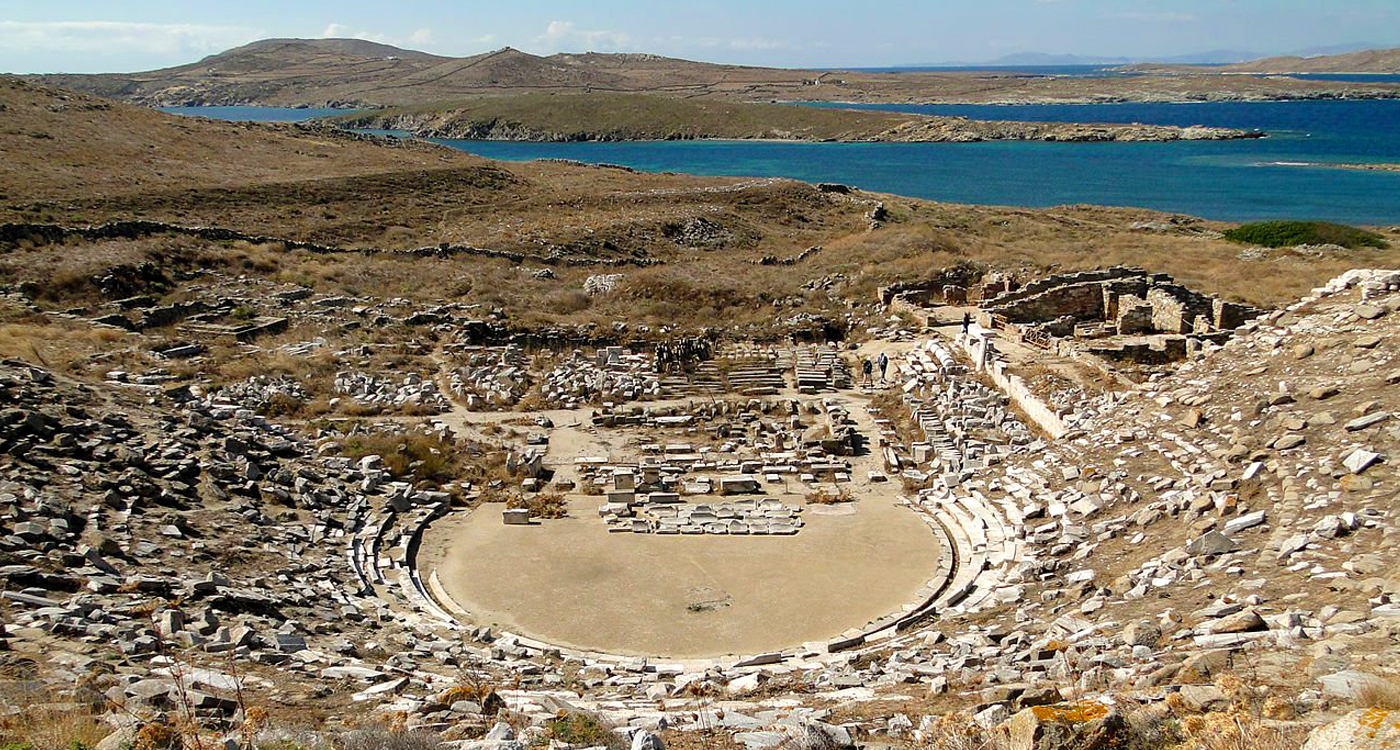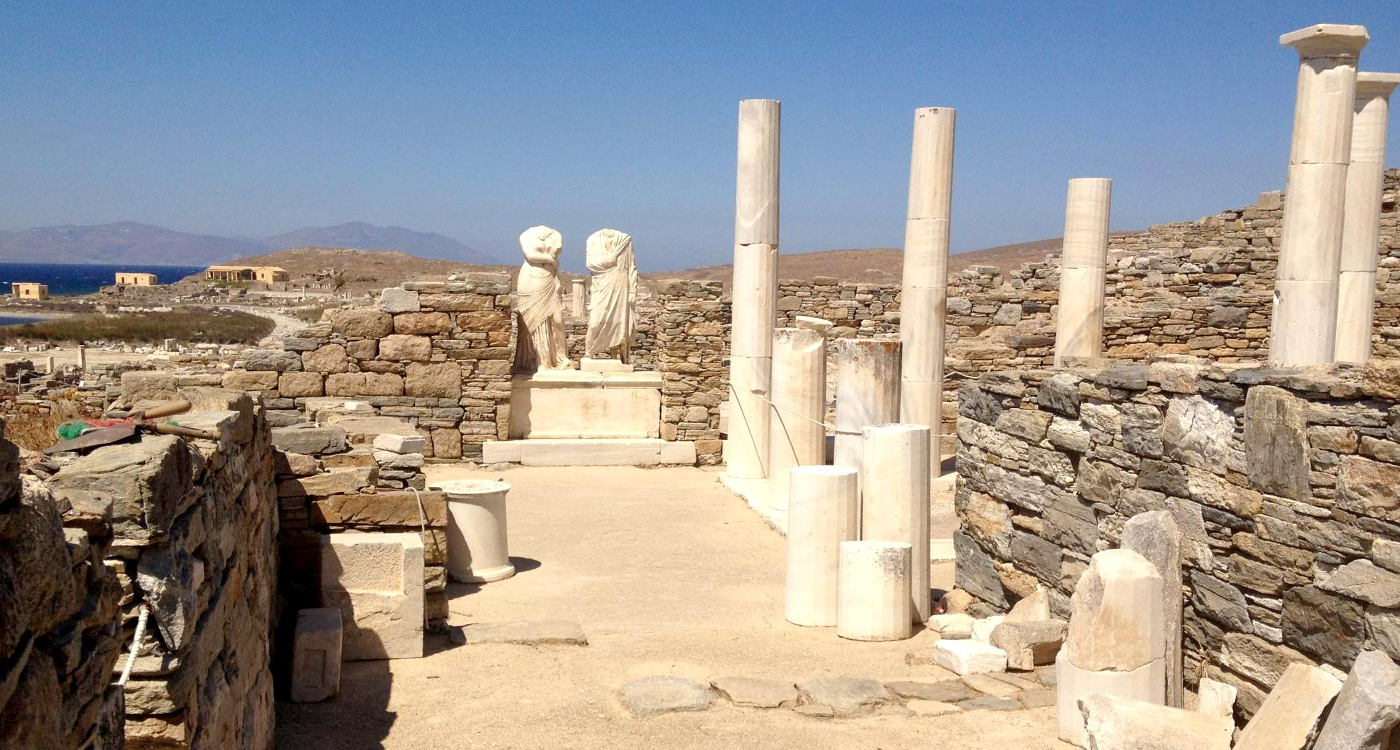CULTURE
The World Trade Center 166 B.C.
DELOS
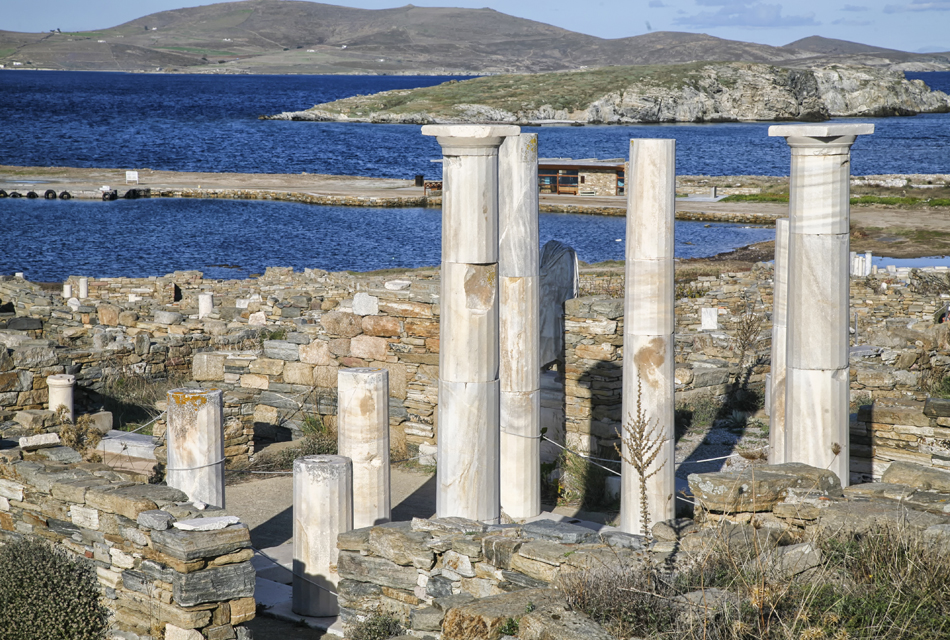
Every step you take on the Holy island is vaguely reminiscent of the past. Out in the air, the attentive listener can make out footsteps of people that lived in past times. Discover the sacred land bathed in light and blessed by Gods, with indelible signs of its glorious past.
The ancient Greeks regarded Delos as the land of Apollo and Artemis: the land of day and night light. According to the myth, Leto – seduced by adulterous Zeus and carrying his unborn child – fled Thrace and the wrath of Hera, and gave birth on the island of Delos. Artemis was the first to arrive on the island and right away there was light, as Apollo made an appearance and filled the world with golden reflections. A light is so extraordinary that even modern scientific measurements have identified Delos as one of the most luminous spots on the planet.
In the 3rd millennium B.C. the island had already been discovered and around the end of the 15th century B.C. the Mycenaeans established settlements in the small valley by the sea. On the 7th day of the Sacred month (February – March) many Greek cities sent delegations with presents for the Apollo’s birthday; the festivities included sacrificial rites, concerts, dancing boys, the dance of the Deliades, and many more spectacular events.
During Peisistratos’ term of office (540 – 528 B.C.), and with the approval of the Oracle of Delphi, Athens conquered Delos.
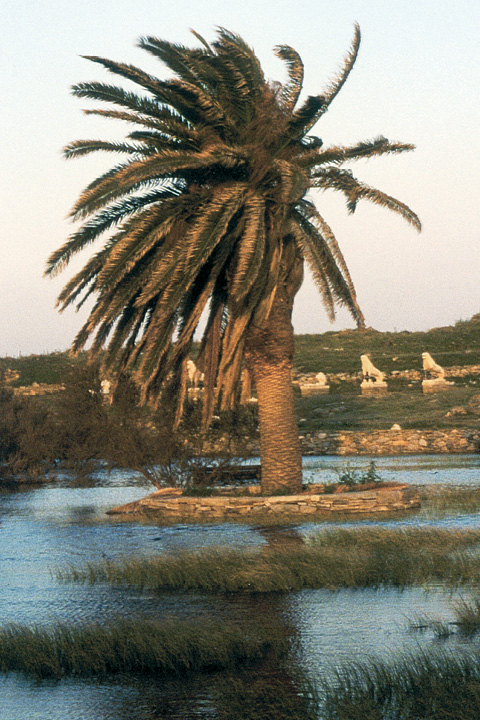
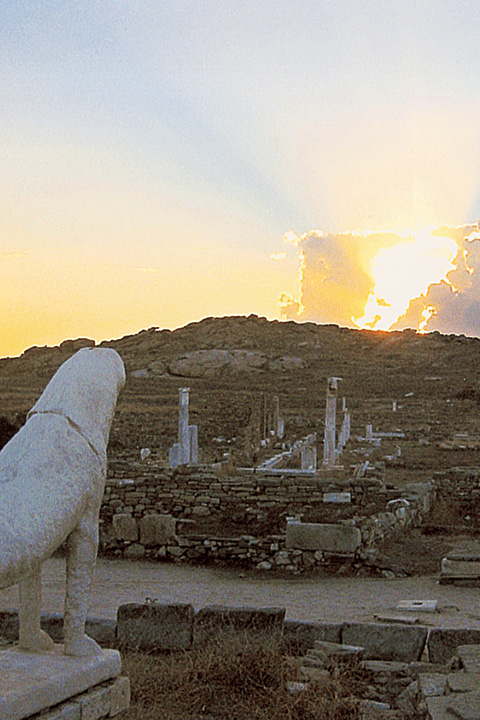
During the Peloponnesian War the Athenians decreed that no one should be born or die on Apollo’s land. Women in labor and the seriously ill were transported to Renea so Delians were gradually and inexorably driven out of their homeland. Moreover, the tombs’ remains and all funeral gifts were moved to Renea to be buried in a common grave, known as the “Cesspool of Purgation”. A visit to Renea, where Dimitris Stavropoulos located and excavated the common grave (1898-1900), can prove the facts.
In 168 B.C. ended Delos’ independence and in 166 B.C. the Romans declared Delos a free port. Very soon Delos developed into the largest trade center in the world at the crossroads of civilization. A large assortment of religions and races gathered on the island, buildings were erected the sea trade boomed. At the peak of the trading activity, there were as many as 75,000 cargo ship arrivals, handling 750,000 tons of cargo and 25,000 slaves a year. Whereas in earlier centuries the town revolved around the Sanctuary, now both the Sanctuary and the town revolved around the port, the Sanctuary Port.
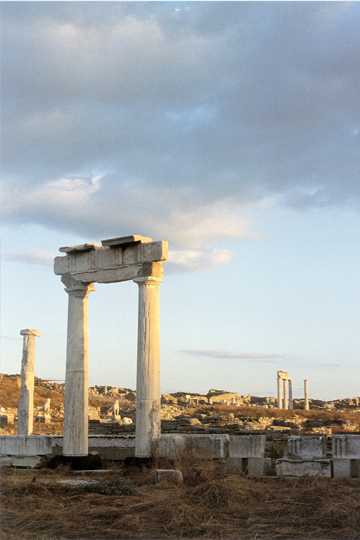
DELOS
We would like to thank Mr. P. I. Hatzidakis for granting permission to use the book Delos, prefaced by Mrs. Marianna Latsi, Olkos editions. Sponsors: LATSIS – EFG EUROBANK ERGASIAS GROUP.


